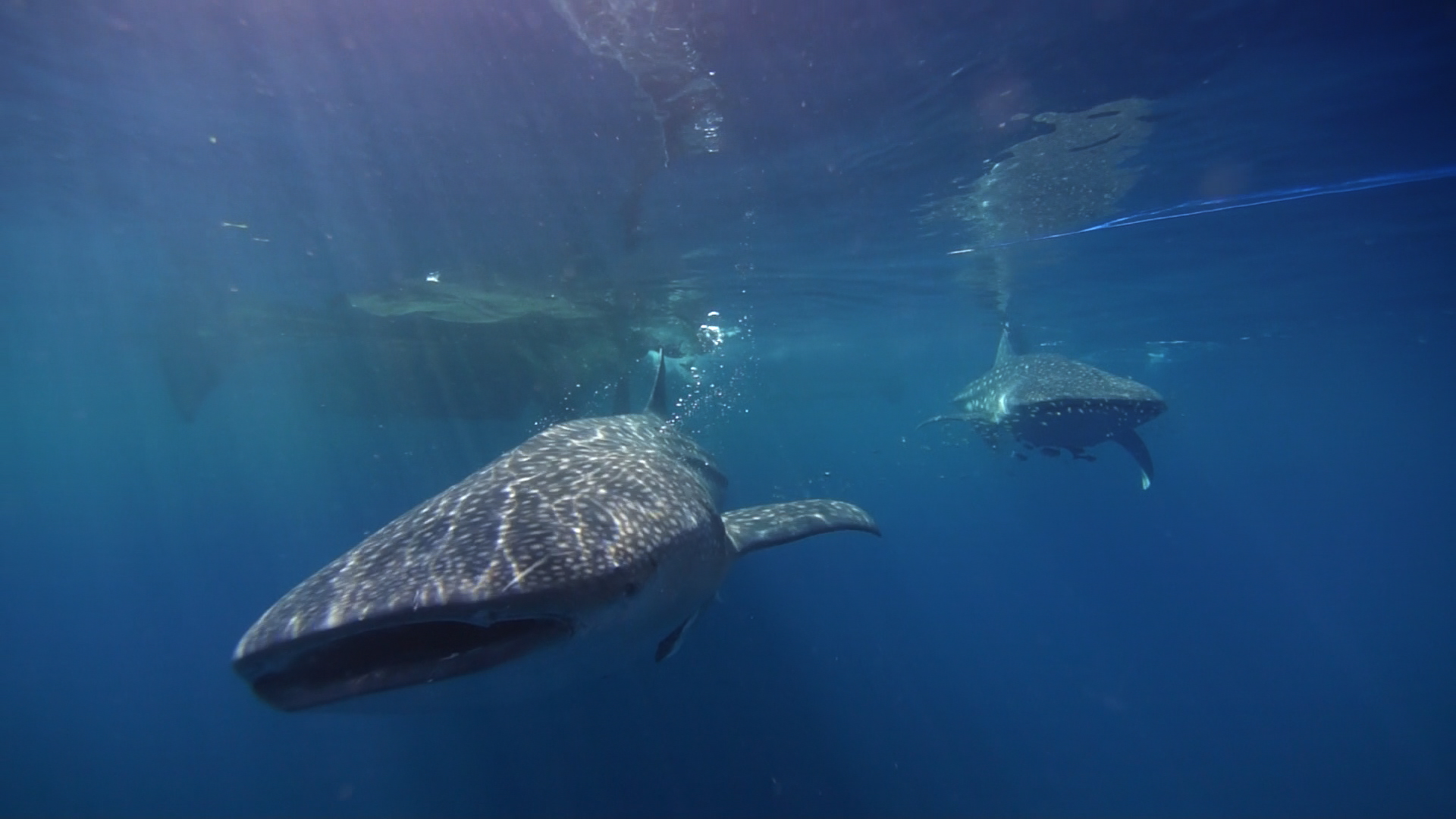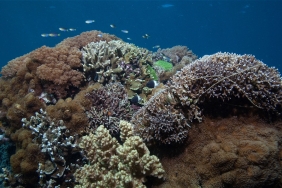GET TO KNOW WITH THIS FLUFFY GIANT, LEARN HOW TO INTERACT
By Casandra Tania & Aulia Rahman
Indonesia has finally owned an important guide regarding the management of biodiversity in tourism sector. It is a guide to interact with whale shark (Rhincodontypus). The guide that was created by Balai Besar Taman Nasional Teluk Cenderawasih (BBTNTC) and WWF-Indonesia launched on March 30th 2014 in a seminar on Deep and Extreme Indonesia exhibition, Jakarta International Expo, Kemayoran-Jakarta, aims to provide information to the tourism actors, whether the tourists or the tourism operator on interacting with whale sharks.
The activity began with a movie screening titled “Gurano Bintang” ( a local language means a whale shark) which gives a portrayal about the conservation program that is held by WWF-Indonesia in Taman Nasional Cendrawasih (TNTC). A presentation titled “Bio-ecology and The Result of Whale Sharks Study in TNTC” was presented by Casandra Tania (Marine Species Officer).
Interaction instruction on a pocket book version was also distributed to the participants who came. Beny A. Noor (Project Leader WWF of Cendrawasih Gulf Program) and Dwi Ariyoga Gautama (Bycatch Coordinator) also attended as speakers and Dewi Satriani (Campaign & Mobilization Manager) was the moderator on this event. The participant enthusiastically asked further about Whale Sharks that live in TNTC, about the impacts of plastic garbage also about the whale hunter issues in Lamera.
A few days earlier, on March 27th 2014 to be exact, BBTNTC, Area and Variety of Fish – The Ministry of Marine and Fisheries and WWF-Indonesia held an early launching to approximately 40 participants who are the legitimate people, such as dive operator, tourism organizer, home stay owner, Dive Master, and other relatable institutions.
Brent Stewart, a scientist from Hubbs Sea World Research Institute, United States, who has led the whale sharks research on Cendrawasih Gulf since 2011 conveyed the same concern. In his opinion, the pressure from tourists is too tense until it is feared to infer the life cycle of whale sharks. He also added the basic concerns are the lack of information and the greater mystery that surround this endangered species.
“Currently, WWF-Indonesia has launched to the public who interested in ocean tourism to understand the basic protocols when people face mysterious species in the sea. Even though the species is well-known to be friendly and famous as a “stupid shark”, we should remain vigilant , because there are less things we know about them. Vigilance means the win-win solution for both sides, the tourists will be comfortable, and the species and its habitat will be safe. Moreover, the surroundings in Cendrawasih Gulf will also feel the positive impacts in the future.” Added Cassandra Tania.
Some basic protocols to be followed like do not too close, make a proper distance, at least 2 meter from the left side of their fins and 3 meter from the tail, do not touch, do not use the flash on camera are the protocols that tourists should obey. For further information you can download (PDF) here, or click link beside the article.
Translated by : Thalia Shelyndra





